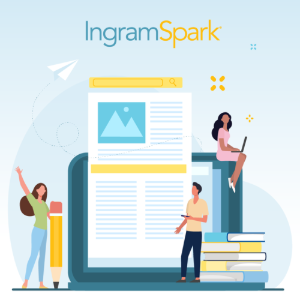Remember the days of Harry Potter mania? Practically every chain and indie bookstore in several countries had a release party for the latest J.K Rowling tome. Children, teenagers, and even parents clad in cloaks, crooked plastic glasses, and eyeliner lightning bolts waited for hours to get their hands on a copy of the latest book. I was a fixture in these lines, complete in my Hermione costume. We look back at these midnight literary festivities ten years later as a pop-culture touchstone. However, to people in the publishing industry, this is the perfect example of how pre-orders can make your book a success.
I will first start by telling you that your book will most likely not be Harry Potter. However, hope is not lost! This does not mean that you cannot make your book successful through pre-orders with a little savvy and know-how!
What Are Pre-Orders?
First, here is the basic definition of pre-orders (also known as pre-sales): sales that accumulate before the book's publication date. Knowing this tends to make people think, “This sounds awesome! How do I do it?” Well...
How Do I Allow Pre-Orders for My Book with IngramSpark?
During the title setup process with IngramSpark, you are asked to provide two dates.
- The first is the publication date: this date represents your book’s birthday and when it's officially available for the public to buy.
- The second date is the on-sale date: the on-sale date is a tad more complicated. To retailers, it means that they are not allowed to sell your book before this date. For Ingram, any pre-orders that have accumulated will start printing and shipping 30 business days before the on-sale date.
*Some exceptions may apply for international orders or if there is heavy order volume. In these instances, it's possible that orders may be fulfilled prior to the 30 business days before the on-sale date.
If you remember one thing from this article, it's that your publication date and on-sale date should be the same. For example, if your publication date is January 1st, your on-sale date should also be January 1st.
When you have completed the title setup process, the last step is to enable distribution with a book distribution company. If your publication and on-sale dates are in the future, this will automatically create pre-order pages on retailers such as Amazon, Barnes & Noble, and bookshop.org. On your publication/on-sale date, that pre-order button will turn into a buy button. That will mark the end of a successful pre-order campaign.
IngramSpark lets you set publication and on-sale dates up to 365 days in advance. For instance, if you have a pub date/on-sale date of January 1st, 2022, you can set up your book as early as January 1st, 2021 and have a pre-order page populate on retail sites. Pre-sales by traditional publishers range between six to nine months long. Many indie authors and publishers opt for a three to six-month pre-sale. This means that the book is uploaded to the IngramSpark platform and enabled for distribution three to six months before the publication/on-sale dates.
When choosing the length of your pre-sale, it is important to keep your sales strategy in mind—specifically, where are you planning to sell your book? National chain stores, like Barnes & Noble in the U.S., start ordering titles six months before their publication date, and independent bookstores typically start ordering three to four months in advance. If stores like these are important to your sales strategy, be mindful of their timelines.
Many indie authors and publishers opt to do “fast-to-market” releases, especially for topical books. This is the beauty of self-publishing! However, keep in mind that if you give yourself less than a month from the time you set up and distribute your title through IngramSpark sale date, it shortens your window to accumulate pre-orders. At the end of the day, whether or not you implement a pre-sales strategy should align with your book's overall marketing plan.
Please note: Ingram uses the on-sale date to decide when to print and ship books to sellers. IngramSpark generally begins printing 30 business days before the on-sale date, however, some exceptions may apply. IngramSpark may begin printing titles as soon as the title is enabled for distribution. If you need to upload revised files for your book, have the final files uploaded and the eproof approved before adding distribution services to avoid file processing delays. If you upload revised files after you add distribution, there is a high risk your latest files won't be the ones printed and shipped.
Book Marketing for Pre-Orders
It’s one thing to have the book available for sale; it’s another thing to drive readers to your book. Engaging your readers throughout a pre-sales campaign is incredibly important for accumulating customer interest. Utilizing social media, handing out advance reader copies, and obtaining book reviews are all useful in a strong pre-sales strategy.
A good review in a trade publication, reputable blog, or local newspaper will drive new readers to your book, especially because your title is now recommended. Engaging in your regional reading community through indie bookstores, libraries, and book clubs is a great way to create a buzz amongst local readers. Social media marketing and advertising are also essential during the last few weeks leading up to your pub date to drive your readers to the book. Remember, always have a “call to action” in your advertising like “pre-order now!”
Bookstores and Book Pre-Orders:
If you are doing a lot of social media promotion or have a personal website where you feature your book, remember one thing: be retailer agnostic! Spread the sales love. Why limit yourself to one channel? Amazon, Barnes & Noble, and bookshop.org can all offer pre-orders. It is effortless to grab the link to your book's listing for many retailers and put them all on your website and book marketing materials. You can even embed the links on your social media! Not all readers like to buy from just one store, so be sure to offer more than one buying option.
Book Pre-Orders Create Demand
Another thing you should remember is that demand is king. If there is demand for your book, bookstores will be more likely to buy it. This is where your amazing family and friends come into play. Point them to their local indie bookstore or chain store and kindly ask that they pre-order a copy of your book. Have their friends do it too! The stores will start to take notice. This is guerilla marketing at its best. You will be creating buzz via word-of-mouth while driving pre-orders.
We hope that one day your title will have hundreds of people in costumes waiting in line to get their hands on your work. However, starting with setting future publication and on-sale dates in conjunction with a solid marketing plan can advance your book's reach in the meantime. Just remember to engage your readers while driving them to your book, and you will be well on your way to becoming a pre-orders wizard.














